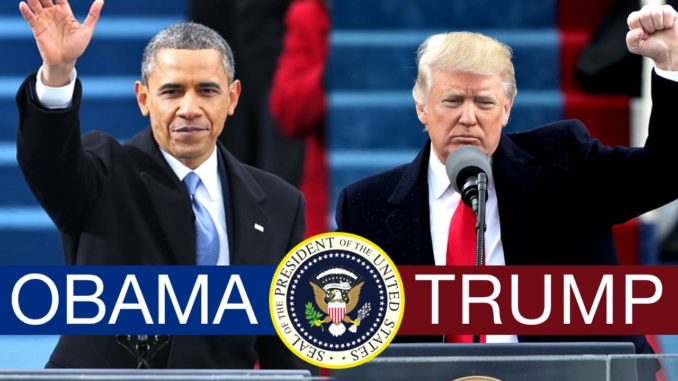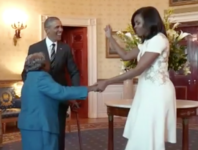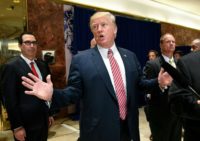
By ELIZA PLUCKHORN
February is the month of national African American Heritage, and a time when the president of the United States reflects on the Black community’s past, present, and future in the United States. Every year, the president releases a presidential proclamation on the subject.

According the the most recent census count, there are about 45 million African Americans that live in the United States.
As President Trump followed Obama in office, the comparison between the two drastically different men is interesting to observe and consider. Hearing a proclamation on the subject of equality pertaining to African Americans from an African American president is very different than similar words, coming from a white man of privilege in office.
In Obama’s last year in office in 2016, he had many visitors to the White House to reflect upon the past, and where the country is currently in terms of equality. Joel Gunther from BBC News called 2016’s celebration of this month the ‘blackest black history month’, and rightfully so. Of all the visitors the White House saw in February of 2016, two stood out; a 3-year-old boy who had only ever lived under a black president, and a 106-year-old woman who was unsure if she would ever I’ve under a black president.

By contrast, President Trump has not always been in favor with the African American community, as he has been heard saying things such as ‘Robert E. Lee, a great general‘ and calling white supremacists ‘very fine people’ after a white supremacist rally in Charlottesville, North Carolina in 2017.
The stark difference between the two presidents, however, doesn’t lie in their presidential proclamations. The last presidential proclamation Obama made compared to the presidential proclamation Trump just made have similarities, though Obama did go into more detail about our countries past and slavery. Trump only mentioned slavery once in his speech.
Obama also mentioned in his proclamation the disproportionate incarceration of African Americans in our countries prison system, and that although a lot of progress has been made for racial equality, there is still a long way to go before justice is truly served for everyone in an equal manor. Because of racial turmoil between Trump and the American people, some citizens have a divided view between the countries presidential past and present.
Alex Levine of Ramsey, 22, said in an interview how she believes Trump is creating a more divided America. “Obama is African American and promoted the recognition of his people. Trump promotes ‘traditional American values’ which tends to exclude African Americans,” said Levine.
“Obama definitely recognized African American heritage month more because he is culturally African American, so he has the cultural knowledge including the struggles and injustices that community faces. Although he did not really make as many references to race relations, he still implemented stronger policies on behalf of AA,” said James Liao, 21, of Lincroft.
Candor Still Applies
In all fairness, Trump specifically addressed the theme of this year’s African American Heritage month, which is ‘African American’s and the Right to Vote”; in 2016 the theme was “Hallowed Grounds: Sites of African American Memories.”
Obama seems to have done a better job of summarizing the plight African Americans still face, although Trump mentioned it as well. Trump however did not focus solely on African American struggles, giving himself credit throughout the whole proclamation.
Trump mentioned that this year’s observance coincides with the 150 year anniversary of the 15th amendment, which gave African American men the right to vote. “This Amendment to the Constitution, ratified in 1870, prohibits the government from denying or abridging a citizen’s right to vote based on ‘race, color, or previous condition of servitude.’” said Trump.
Following this part in his speech, Trump went on to mention the first African American member of congress, Hiram Revels, giving him credit as a trailblazer, as he made history for our country. After his historical reference, Trump went on to mention an act he signed into law in 2017.
“Through the transformative Tax Cuts and Jobs Act, more than 8,700 distressed communities battling economic hardship have been designated Opportunity Zones, creating a path for struggling communities to unlock investment resources and create much needed jobs and community amenities,” said Trump.
According to The Hill, a nonpartisan reporting group that focuses on politics, “Most of the bill’s $1.9 trillion in tax cuts targeted corporations and wealthy Americans such as me, leaving little more than crumbs for most working Americans — and the bill’s results of the last year have lived up to that initial analysis.”
You do a great job linking sources and incorporating quotes. The specific instances of difference stand out the most in the section before the subhead. I would like to hear more context for the last quote.